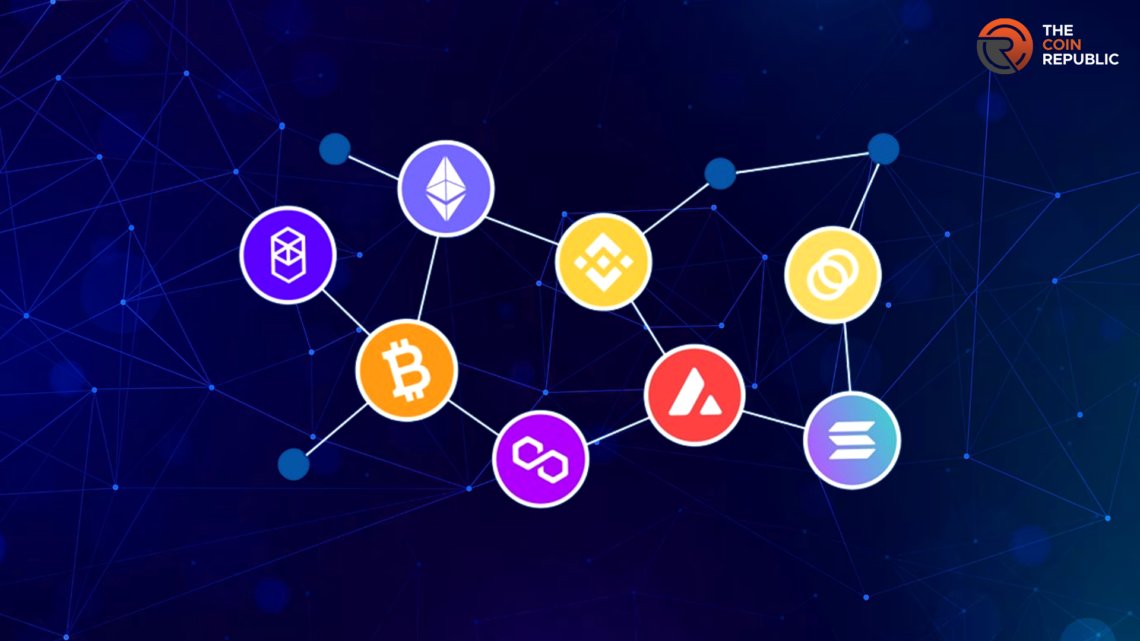- 1 Cross-chain bridging is needed to transfer the information and assets.
- 2 It enables users to conduct fast and efficient transfers with ease.
The demand for blockchain is increasing because it enhances security and enables faster transactions. But this is not the only need for the community. Users also need interoperability within the chains. This is provided by cross-chain bridge services.
Many blockchain platforms use different techniques to facilitate interoperability. The techniques include different consensus protocols, data storage, and execution environment. Examples of blockchain executing some of these techniques are Bitcoin, Ethereum, Avalanche, Polygon, Arbitrum, and Solana which operates the exchange facilities
What is Cross Chain Bridging?
A cross-chain bridge helps in the transfer or exchange of information. This means the exchange of assets and information from one blockchain to another blockchain. Exchange around different blockchains is possible but it requires a high amount of fees and is also time-consuming.
For this exchange first, the cryptocurrency has to be changed into the fiat currency and the process also involves fees. After this, the user utilizes this currency into the desired cryptocurrency which is time taking.
The cross-chain bridges facilitate the exchange without the need for fiat currency. There is no requirement to change the cryptocurrency to the fiat currency. The transfer of one cryptocurrency to another is easily facilitated by cross-chain bridges which are fast, efficient, and secure. It also enables the transfer of smart contracts and NFTs from one blockchain to another.
There are several ways to enable transfers through a cross-chain bridge. One such way is through wrapped tokens. Wrapped tokens encapsulated the value of one token inside another token.
Another approach is enabling the liquidity pool. With a liquidity pool, the cross-chain bridge provider holds pools of various coins where one can be exchanged for another.
6 Best Cross-Chain Bridge
Portal Token Bridge: Portal Token Bridge is built on top of a wormhole protocol that enables transfers of both tokens and NFTs across the bridge across different chains. When the token is bridged between chains the original token is locked on a smart contract and a new wrapped token is minted on the target chain.
The supported blockchain networks are Acala, Akgorand, Aptos, Arbitrum, Aurora, Avalanche, Binance, Polygon, Terra, etc. The supported tokens are USD, Maker DAO, Shiba Inu, Axie Infinity, Sandbox, etc
Synapsis Bridge: The Synapsis protocol provides secure cross-chain communication through its universal interoperability model. Synapsis Bridge allows users to swap on-chain assets across 15+ EVM and non-EVM blockchains safely and securely.
The supported blockchain networks are Ethereum, Arbitrum, Avalanche, Optimism, Polygon, etc. Some of the supported tokens are Synapse, Wrapped Bitcoin, USD Tether, etc.
Umbria Narni Bridge: The Umbria Narni Bridge facilitates blockchain asset transfer through a unique world where assets are held across multiple chains. It is a liquidity provision protocol to lower the cost and speed up the cross-bridging.
It holds multiple assets on multiple chains together in the liquidity pool. The supported blockchains are Fantom, Cardano, Polygon Mainnet, Ethereum Mainnet, BNB Chain, Avalanche, KuCoin community chain, Huobi Eco Chain, etc. And, some of the supported cryptocurrency coins are Ethereum, Polygon, Tether, USD coin,
Wrapped token, etc.
It is different from other cross-chain bridges because it does not rely on validator smart contracts which slows down the bridging process. By removing the necessity of validation it can complete the cross-chain transaction with cheaper fees.
Multichain: It is a router protocol that facilitates the flow of data and assets across different blockchain networks. No other cross-chain bridge supports the exchange of so many tokens as Multichain. The supported blockchain includes Avalanche, Arbitrum, Astar Network, Bitcoin, BNB chain, Ethereum, Fantom, Terra, XRP, etc.
Cross Chain Bridge: The Cross Chain Bridge supports the transfer across various blockchains. The tokens and NFTs are easily transferred across multiple networks. The supported blockchain networks are Avalanche, BNB Chain, Polygon, Ethereum, and Fantom. The supported cryptocurrency tokens are Bridge, Bulk Tokens, Moonie NFT, Tether, and Wrapped Ethereum.
Celer cBridge: The Celer cBridge is a decentralized and non-custodial asset bridge. It uses the Celer State Guardian Network to enable liquidity across different blockchains. It supports 40+ blockchains.
Supported blockchain networks are Aster, BNB Chain, Ethereum, Moonbeam, Moonriver, etc. Some of the supported cryptocurrency tokens are Tether, USD coin, Thales, USD
Advantages and Challenges of Cross-Chain Bridges
The cross-chain bridge provides a wide range of advantages that include enhanced scalability and performance. Users can access more marketplaces and more assets on different blockchains.
It reduces network congestion as the user can move the assets and data to less crowded and cheaper blockchains. It also benefits the user with more advantages of blockchain like enhanced security, privacy, and scalability.
The cross-chain bridges also come with some challenges like compatibility, which need a high level of technical coordination between different blockchain and protocols. Sometimes, the security risk also arises due to malicious validators, oracles, or relayers that could compromise the bridge or manipulate the transactions.

With a background in journalism, Ritika Sharma has worked with many reputed media firms focusing on general news such as politics and crime. She joined The Coin Republic as a reporter for crypto, and found a great passion for cryptocurrency, Web3, NFTs and other digital assets. She spends a lot of time researching and delving deeper into these concepts around the clock, and is a strong advocate for women in STEM.


 Home
Home News
News









